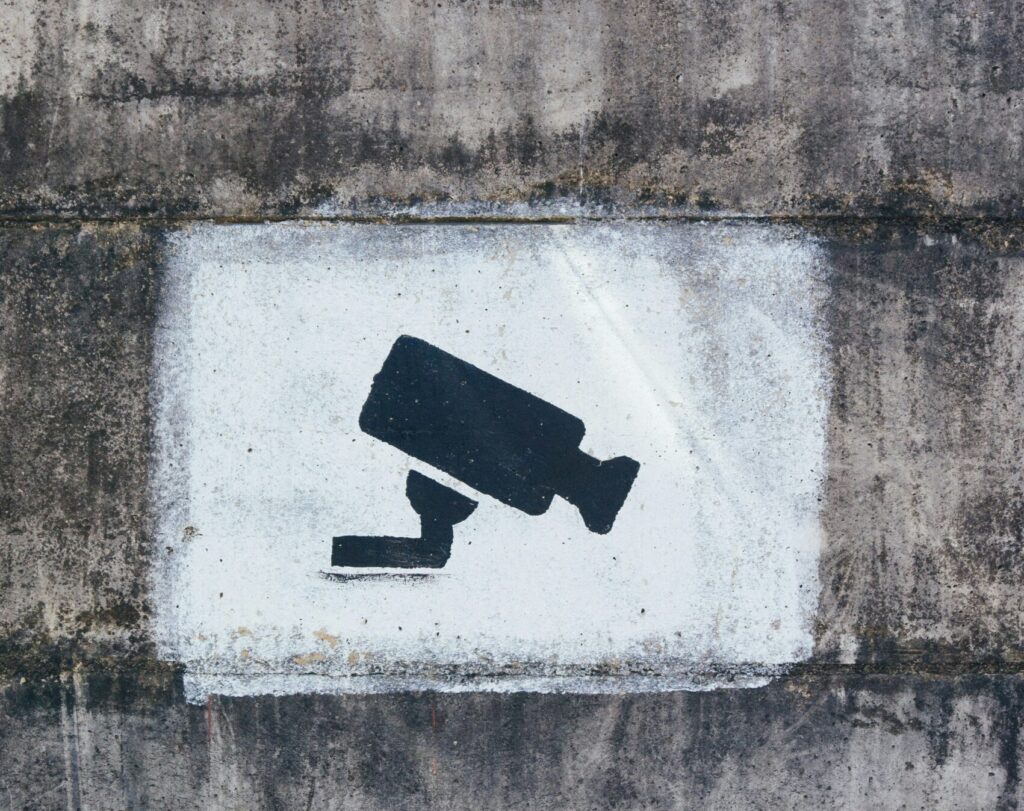I would go so far as to say that the natural, proper, fitting shape of the novel might be that of a sack, a bag. A book holds words. Words hold things. They bear meanings. A novel is a medicine bundle, holding things in a particular, powerful relation to one another and to us..
—Ursula K. Le Guin, The Carrier Bag Theory of Fiction, 1989.
In morally dark times, when the question shifts from “What is right?” to “What can I get away with?” media criticism must become a force for transformation—to dismantle coercive systems, cultivate solidarity, and grapple honestly with the tools it interrogates. Scholars must do more than expose injustice; they must enter into accountable dialogue with the technologies shaping our world. In this light, transparency isn’t just about decoding algorithms—it’s about revealing the values, assumptions, and power structures embedded in their design. As innovation accelerates, media criticism must remain in conversation with the deep reservoirs of religious, cultural, and spiritual wisdom, not bulldozing but learning from meaning-making practices.
How can media acts help transform the world? A media act is a deliberate intervention in public discourse—through image, sound, story, or platform—meant to spark meaning, provoke a response, or catalyze change. Kim Stanley Robinson’s The Ministry for the Future (2021) envisions global transformation through coordinated action—blending policy, technology, and moral reckoning—to confront the climate crisis and reshape the world toward justice.

The tragedy of Robinson’s beautiful vision is that it falters in an age that has lost faith in progressive grand narratives and universal truths, in which knowledge seems to splinter and meaning to multiply. Reality bends to power, language, and code more than ethical conviction. What remains is the personal. However, as feminist activist Carol Hanisch reminds us in her 1969 essay (reprinted in 2006), the individual is political. When women speak about housework, childcare, beauty standards, sexual pressure, or being silenced, these are not merely “personal problems”—they are experiences shaped within and by political forces, cultural norms, and systemic power.
In the absence of grand interventions, it is through small, personal, intentional media acts—mediaseeds—that individuals plant the roots of media transformation, cultivating practices that bloom into resilience, solidarity, and moral renewal.
Gathering Mediaseeds
But where to gather mediaseeds? I argue that we can mine what I call spiritual dystopias of resilience to cultivate a post-collapse ethical imagination—one that reveals media tactics: opportunistic, creative acts of resistance within systems one does not control. These creative narratives of moral survival envision worlds on the brink of or aftermath of collapse, where media, religion, and spirituality become tools of memory, resistance, and renewal. Each story confronts authoritarianism, ecological and societal breakdown, and the failure of dominant systems, while illuminating the fragile, often hidden practices of storytelling, belief, and communication that help communities endure, adapt, and rebuild.

I will gather mediaseeds from three novels, beginning with A Canticle for Leibowitz by Walter M. Miller Jr., published in 1960. Written during the Cold War, the novel reflects nuclear anxieties and critiques of blind technological progress. It imagines a post-apocalyptic future where a Catholic monastic order safeguards remnants of human knowledge. As civilization collapses into ignorance—an era known as “the Simplification”—mobs destroy books and persecute intellectuals. In response, underground figures called bookleggers risk their lives to smuggle and hide texts, while “memorizers” commit entire works to memory, echoing medieval monasticism and the oral traditions of Ray Bradbury’s Fahrenheit 451 (1953). These are not just survival strategies—they are sacred acts of cultural and moral resistance. Religion, understood as a lived media practice, often transmits ethical worldviews not through doctrine but through gesture, repetition, and ritual memory. By preserving not only information but the ethical seeds needed to rebuild the world, Canticle dramatizes the fragility and necessity of media acts in times of collapse.
Margaret Atwood’s The Handmaid’s Tale (1985) is a dystopian novel set in the theocratic Republic of Gilead, where women’s rights are stripped and reproduction is tightly controlled. Written during the Reagan era’s conservative backlash, it critiques patriarchy, religious extremism, and shrinking civil liberties. Atwood shows how authoritarian regimes weaponize faith, language, and gender to maintain power. In this system, whisper networks and oral storytelling act as mediaseeds—quiet acts of resistance that preserve memory and identity. When official media is censored, these low-tech exchanges carry truth, nurture solidarity, and help resistance survive—even if only in a whisper.
Spiritual traditions, especially in marginalized communities, have long relied on low-tech media to encode survival strategies—chant, scripture, shrine, and story all functioning as technologies of the soul.

Octavia Butler’s Parable of the Sower (1993) is a dystopian novel set in a near-future America unraveling under climate change, economic collapse, and social chaos. Written during a time of rising neoliberalism and ecological crisis, it follows Lauren Olamina, a young Black woman who survives through adaptability and visionary thinking. In response to societal collapse, she creates Earthseed, a belief system based on the principle that “God is Change.” What her narrative reveals is that religion itself can be a mediaseed: a resilient carrier bag of symbols, ethics, and shared imagination. Earthseed is fluid, grounded in lived experience, and emphasizes care, responsibility, and transformation. As a mediaseed, Butler offers not inherited doctrine, but an adaptive, moral blueprint for resilience in a fractured world.
Analog, Low-Tech Practices as Sites of Resistance
In the face of global crises—climate change, political fragmentation, and authoritarianism—speculative fiction becomes not escapism but an ethical tool: a way to prepare the moral imagination for what comes next. These stories are not mere dystopias; they are blueprints for resilience, each containing mediaseeds—small acts of memory, ritual, resistance, and care that help us endure and rebuild. They don’t merely warn; they teach us to listen, whisper, adapt, and act. Silence is not neutrality—it’s complicity. But to speak gently, refuse cruelty, carry a story, or guard a forgotten truth—these are defiant seeds of a better world. Dark times don’t last forever. How we carry ourselves through them—that is what echoes forward.
While not opposed to digital technologies—in fact, their early, charismatic phase, as imagined by figures like Ted Nelson, offered genuine emancipatory promise—I argue that we now inhabit an algorithmic cage: a reconfiguration of Weber’s iron cage for the datafied era.
My use of “mediaseeds” therefore privileges analog, low-tech practices—ritual, oral storytelling, communal gatherings, handwritten texts—as sites of resistance less susceptible to commodification, surveillance, and algorithmic capture. Unlike the hypervisible, scalable tactics valorized in digital activism, these slower, embodied forms cultivate presence, trust, and moral imagination.
In authoritarian contexts, such practices endure precisely because they elude quantification. Drawing on the anthropology of religion, we might say that such mediaseeds are sacraments—bodily signs that resist erasure by anchoring meaning in the flesh. My turn to literature is thus not a retreat from technology, but a redirection toward spiritual media that resist the logics of optimization and reclaim meaning through opacity, repetition, and relational depth. Unlike their digital counterparts, analog practices are far less vulnerable to algorithmic capture, datafication, and commodification. Precisely because they resist quantification, these low-tech acts foster deeper trust, embodied presence, and a moral imagination rooted in lived relation rather than predictive metrics.

Let’s be honest: scholars of communication media have spent decades remixing the mediascape—tagging it, theorizing it, citing it into oblivion. But the point is not just to interpret the feed—it’s to change it. While dominant resistance theories plug into the power of digital tools—hashtags, podcasts, livestreams—I plant my flag in the analog. This essay champions the slower, quieter acts: oral storytelling, memorized texts, zines, rituals, and whispered truths passed in safe rooms and under stars. These low-tech practices are not detours but direct action—embodied, durable, harder to surveil, and deeply spiritual. Religion, after all, has long thrived in the low bandwidth zones of history: the hidden prayer, the shared psalm, the story that refuses to die. In an age of algorithmic capture, the most radical signal might just be silence, breath, and the sacred word spoken face-to-face. As I’ve argued elsewhere, religion functions not only as belief but as embodied media practice—its low-tech persistence offering a quiet form of insurrection against algorithmic totality.
Works Cited
Bradbury, Ray. Fahrenheit 451. New York: Ballantine Books, 1953.
Hanisch, Carol. “The Personal Is Political.” In Notes from the Second Year: Women’s Liberation, edited by Shulamith Firestone and Anne Koedt. 1969. Reprinted in Radical Feminism: A Documentary Reader, edited by Barbara A. Crow, 113–16. New York: New York University Press, 2000.
Le Guin, Ursula K. “The Carrier Bag Theory of Fiction.” In Dancing at the Edge of the World: Thoughts on Words, Women, Places, 165–70. New York: Grove Press, 1989.
Miller, Walter M., Jr. A Canticle for Leibowitz. Philadelphia: J.B. Lippincott, 1960.
Robinson, Kim Stanley. The Ministry for the Future. New York: Orbit, 2021.


